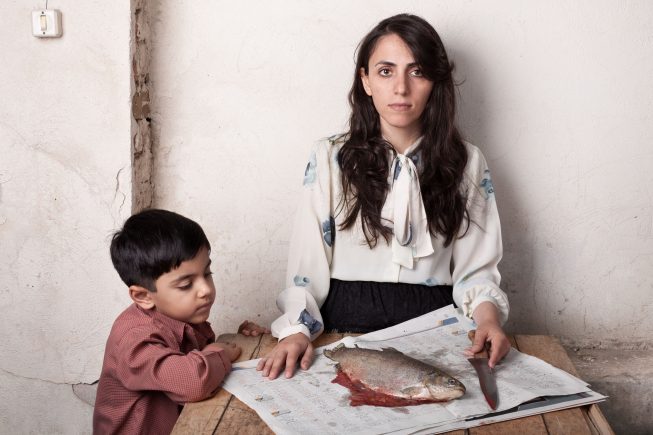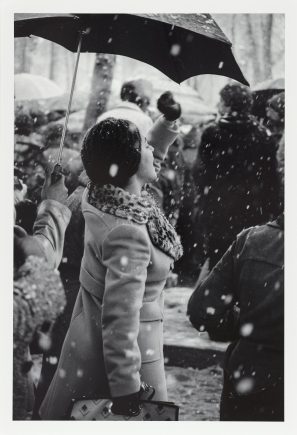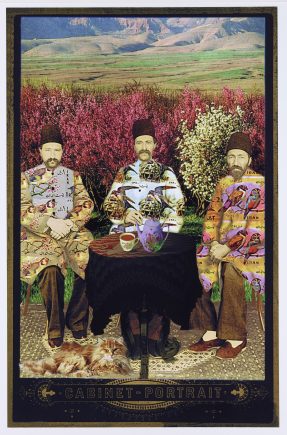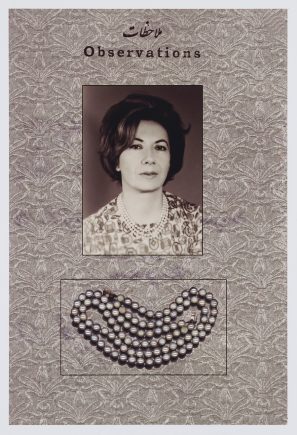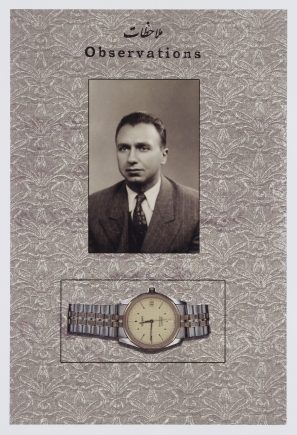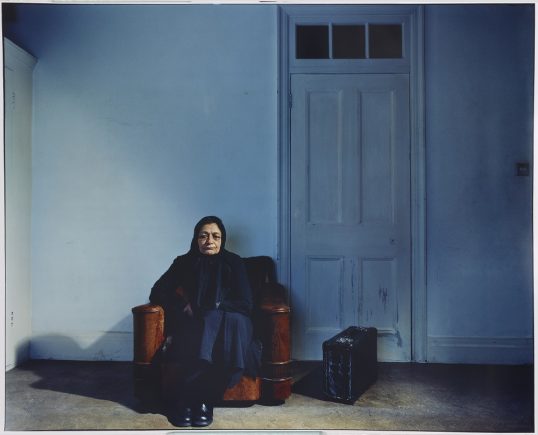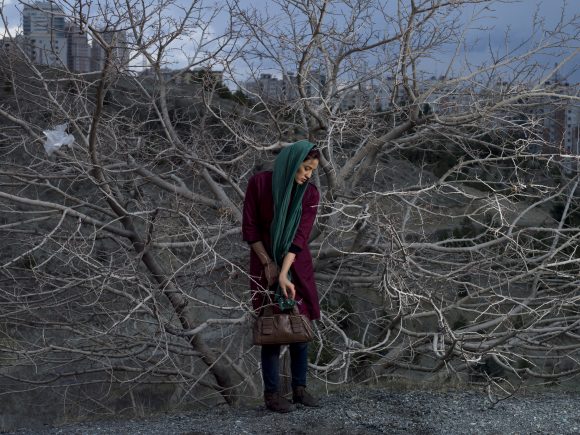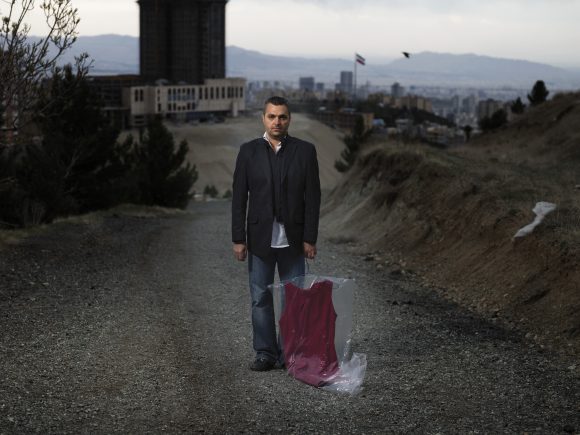August 10, 2019–February 9, 2020
-
Dates
-
Location
Arthur M. Sackler Gallery
-
Collection Area
Arts of the Islamic World, Contemporary Art
From the dynamism of the street to the quiet corners of distant memories, the works featured in My Iran: Six Women Photographers explore the complexities of life within and outside their home country. The images offer nuanced views of Iran while shedding light on each photographer’s identity as an artist. Hengameh Golestan’s shots of women protesting in the streets of Tehran following the 1979 Iranian Revolution capture the spirit and force of a social and political movement that dramatically altered the role of women in society. The remaining five artists—Newsha Tavakolian, Shadi Ghadirian, Malekeh Nayiny, Gohar Dashti, and Mitra Tabrizian—work in this post-Revolution environment, staging and manipulating photographs to reveal deeply moving individual stories, as well as unique observations about contemporary life as an Iranian. Together, these images explore themes of memory, loss, and exile, but also of defiance and hope.
My Iran also honors the legacy of Dr. Jahangir Amuzegar (1920–2018) and the Eleanor and Jahangir Amuzegar Fund for Contemporary Iranian Art, which provides ongoing support for programs of contemporary Iranian art.
Generous exhibition support is provided by the Mohammad Afkhami Foundation; Contemporary Asian Art Endowment; Jahangir and Eleanor Amuzegar Endowment for Contemporary Iranian Art; Mehr Foundation; and UAS Asset Management.
Gohar Dashti
Born in 1980 in Ahvaz, Dashti works in a variety of media, including photography and video, and received her MA in Photography from the Fine Art University of Tehran in 2005. Much of Dashti’s work draws on her memories of growing up during the Iran-Iraq War (1980-1988), and centers on the relationship that individuals in contemporary Iran have to the country’s cultural and political history. She lives and works in Tehran.
Shadi Ghadirian
Ghadirian (born 1974, Tehran) studied photography at the University of Azad, where she was one of the first to graduate after the revolution. Her work focuses on the complex, contradictory world in which young women live in post-revolutionary Iran. She makes visible these paradoxes in creative, often humorous ways that subvert traditional portraiture and popular conceptions of what it means to be a modern woman in Iran. She lives and works in Tehran.
Hengameh Golestan
Golestan (born 1952, Tehran) is considered a pioneer among Iranian women photographers. She began photographing at age 18 and developed her skills alongside her husband, renowned photojournalist Kaveh Golestan. Hengameh Golestan was one of a very small group of documentary photographers who captured street protests in the capital, focusing especially on women during and immediately following the Iranian Revolution in 1979. Denied the possibility of going to the front lines of the Iran-Iraq War in the 1980s, she turned to village life in Kurdistan and other rural areas.
Malekeh Nayiny
Nayiny (born 1955, Tehran) left Iran to study photography and cinematography in the United States and France. Unable to return to Iran after the revolution, she settled in Paris where she lives and works today. Cut off from home and family, she turned to old family photographs to reconnect with her roots. She frequently utilizes digital manipulation to enliven and re-invent photographs from her own family album, blending the past with the modern day and bringing to life cherished memories.
Mitra Tabrizian
Born in Tehran and based in London, Tabrizian is a photographer and filmmaker who explores themes of migration and social fragmentation. Much of her work critiques corporate culture, the urban landscape, and the concept of the homeland. Drawing on the allegorical style of Iranian new wave cinema, her photographs of Iranian emigres focus specifically on a sense of alienation and a longing to return.
Newsha Tavakolian
A self-taught photographer, Tavakolian (born 1981, Tehran) began working at a daily newspaper at the age of 16. Following an interruption in her photojournalistic work during Iran’s presidential elections in 2009, Tavakolian began developing independent still and moving image projects that combine social documentary with portraiture. She continues to work in this vein, paying attention to the stories of women, especially in Iran.
Read the Press Release.
Detail, Somayeh, from Blank Pages of an Iranian Photo Album; Newsha Tavakolian; courtesy of Newsha Tavakolian/Magnum photos, S2021.3.1a-b.
- Jump To...





